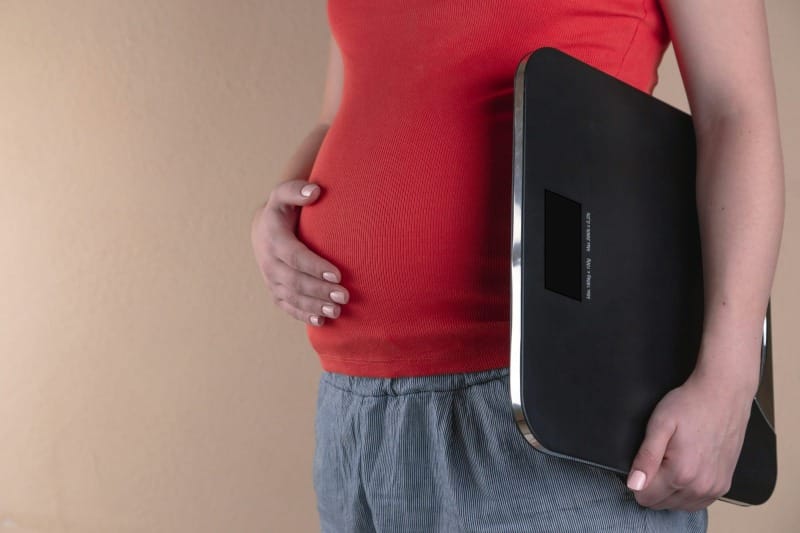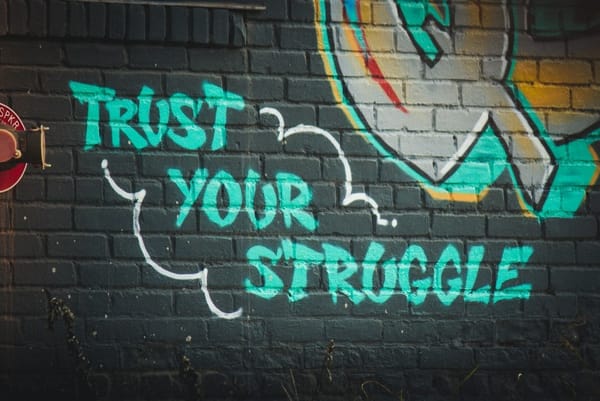A Middle Aged Woman with Fibroids
Is this what it all comes down to? What are fibroids, and how did they affect my weight loss journey? The long read.

Were fibroids sabotaging my gains all along?
Men own their beer guts and joke about looking pregnant.
I recall an elder saying, “Your aunt’s belly is bloated. She looks pregnant. Why can’t she take better care of herself?”
As a young child, I internalized laziness and a lack of self-care with a big belly.
These types of overheard conversations comes to mind as I recover from body dysmorphia in adulthood.
My aunt didn’t drink beer. An active woman, she ran errands with the children and managed their meals. Elder female relatives are never idle. They were also from an era that paid close attention to their appearance dressing well and maintaining raven locks.
Most of them had bloated bellies.
So, how is laziness and lack of self-care associated with a bloating, aging female body?
Fast forward to the year 2024. I’m experiencing perimenopause: hot flashes, cramps, heavy periods, and difficulty losing weight.
As an older woman, the frustration of trying to lose weight is akin to digging yourself out of a sand trap.
Three years after having my third child, I visited my doctor with a serious concern. “I’ve been tracking my calories, but my weight is steadily climbing," I said.
She explained to me that what I was experiencing was normal. We dismissed it as metabolic slowdown, COVID-19 stress, and post-covid-19 stress.
Years passed. I returned to my doctor two years later after sticking to a healthy diet and lifestyle (including intermittent fasting).

“My waist is more prominent than ever, even after a healthy diet and frequent walks. I look six months pregnant. I came to you after trying everything,” I said.
We discussed my exercise regimen and diet. I introduced weight training. Months passed, I gained 5–10 lbs and looked even bigger and experienced more bloat. The weight training did alleviate my fatigue. I was stronger and had more energy than ever before.
Doctor: “You must be eating too much.” I wasn’t.
Coach: “Adequate protein?” Yes. “Perhaps you’re eating too little?” I wasn’t.
Naturopath: “Allergies?” None.
All: “Surely, it’s drinking more water.” Maybe?
Doctor: “Perhaps you should try fasting again, that was working.” Ok.
I took a break from the gym. I could blame over-exertion for the inflammatory weight gain. I was slimmer after my body shed the water. Yet, my waist protruded.
I can not fasten my jeans. I am reminded of when I was six-months pregnant.
The day I got a severe UTI
I never get UTIs. Ok, maybe one time while pregnant twelve years ago.
It was Thursday, and my doctor’s office was closed. Without waiting for a diagnosis, I took the over-the-counter pill and cream solution. The problem cleared up. I would report it later to my doctor, who waved it aside.
Acupuncturist: "Your liver energy is so low as to be non-existent, stagnant."
Life as a pin-cushion is fine. Symptoms are under control until your allocated health insurance runs out. She gives me a box of ginseng tea as a sign that needles alone are not enough.
Irregular Periods
I never brought up heavy periods with my doctor. I figured flooding an extra-long, heavy-duty sanitary pad twice daily was normal. I had girlfriends experiencing far worse while enduring endometriosis.
Who am I to complain? Then one day, the flood didn't stop. For the first time, my period flowed through my nights. Me–a veteran, having as many accidents as a pubescent girl experiencing her period for the first time!
Aren’t these expected symptoms of menopause or perimenopause?
- Hot flashes.
- Trouble sleeping.
- Trouble emptying my bladder / occasional constipation coinciding with my period.
- Need to pee or release gas post-coital/yoga/bowel movement/body exertion.
- Digestive issues in general.
- Swelling in my feet/varicose veins.
- Nerve pain.
I’ve had these symptoms for years. My excuses to myself: Perhaps my vitamin B or iron is low. Perhaps I am not drinking enough water. I didn’t eat enough fibre. I’m gassy from the fruit. Insomnia has been a constant companion over the years. I’m bloated because I ate too much. Was it the fried food, or was it the beans?
I don’t mention these symptoms to my doctor. I’ve been conditioned to believe it’s all normal. Women don’t speak of these constants. They come and go like the tides to the sea — the result of being social, eating meals, that time of the month, and a whole host of distractions.
Women are not lab rats. Our environment is not controlled. In fact, we're hunted by our dependents. We're ever adapting to our physical & mental situation.
The day my doctor took notice.
An absence of a Period
One day, it all stopped.
You could schedule your calendar on my twenty-six days between floods. Here I was, two weeks late at 47 years old.
Am I pregnant? The hellish thought.
“Who’s the father?” my husband exclaimed when I broke the news to him. He got the snip five years ago after our third. Reddit and Google are of no help. To stop my nightmares, he comes home with a pregnancy test.
It’s negative.
Another doctor’s visit — "nothing to worry about. This, too, is… normal."
Medically speaking, if my period doesn’t come for a year, I can celebrate the end of all periods — yippee! menopause.
Occasional spotting
Every two weeks or so, I would have some spotting. Is it the flood? It isn’t. I googled, and lo-and-behold, that is also considered normal. I dismiss it.
Sixty-five days into the drought, I was living my best life.
The Heaviest Torrential Period Ever
When the flood came, it was colossal. I filled a heavy-duty nighttime pad, sometimes in one hour or three. I was bleeding into the night. By day seven of the flood, I was anemic and feeling faint.
Surely, this is not normal.
I sat in my doctor’s office on a Wednesday night. I showed up at 2:30 PM, ten minutes after the administrator stopped taking walk-ins for the day. I begged her to take me. It is this or go to an emergency room.
Soon after 5:00 PM, the administrator’s daughter called. I overheard her crying, “Why aren’t you home yet, Mommy?”
My overworked doctor saw me by 6:30 PM. Despite the late hour, her round eyes were wide with concern. “You need to take an iron supplement for the anemia. I’ll give you a requisition for a cervical ultrasound. You are going through menopause.” She said this last sentence with conviction, proving she had not fully believed it prior.
I am, after all, relatively young in both look and age.
I had no answers, only more questions. For now, her reassurance that I wasn’t dying was enough. We’ll get to the bottom of this together.
The First Scan
The Ontario Health Insurance Plan (OHIP) covers these tests. The hardest part is getting an appointment. The first lab I called suggested an appointment in a month (that administrator urged me to find another lab).
Luckily, I found a nearby lab that gave me the scan within a day. 🇨🇦
The technician was kind. She tried to make the uncomfortable procedure as easy as possible. She used an ultrasound wand to scan my womb.
I apologized for the blood; I was on day nine of the flood. I was reassured this was not her first rodeo. I know technicians aren't supposed to tell me what's going on, but she took pity on me. She pointed out the two fibroids growing within my womb.
What is a fibroid? From wikipedia… Uterine fibroids, also known as uterine leiomyomas, fibromyomas or fibroids, are benign smooth muscle tumours of the uterus, part of the female reproductive system. Most people with fibroids have no symptoms, while others may have painful or heavy periods.
Armed with the knowledge that the fibroid could be the culprit for the heavy bleeding and my larger-than-usual waist, I needed to learn more.
Deep dive into uterine fibroids from a non-medical perspective
There is A LOT of misinformation out there.
I do not watch Doctor Oz, but I appreciate his explanation. He includes a physical example of a uterus with the hardness and heaviness associated with fibroids.
I have joked about how my weight gain must be due to growing rocks somewhere; I was a prophet.
For a more frightening introduction to fibroids, there are endless videos on YouTube of surgical removal of fibroids; sometimes, a woman may carry hundreds.
Why not just say every woman has at least one?
There’s very little research to identify the cause of fibroids. It isn’t as simple as saying there is a lack of longitudinal studies on women.
- How are fibroids identified?
- What body of women would subject themselves to this scan willingly?
- To carry out such a study, what would be the consequences when a significant number of women are diagnosed with large fibroids (non-cancerous tumour bodies) that cause no issues?
Suffice it to say fibroids are being studied:
- in women seeking fertility treatment;
- in women whose fibroids are causing issues.
Women can have fibroids the size of a grain of rice with no effect. In contrast, the biggest fibroid mass uncovered was larger than a baby. Some women have one, others hundreds.
In pregnancy, I remember thinking fondly: my baby is the size of a strawberry — my baby is the size of a grapefruit — my baby is the size of a melon! The same fruit analogies can be used with fibroids.
Fibroids can grow inside the womb, in the lining of the womb, in the wall of the womb, and rarely (like ectopic pregnancies) outside the womb. They may also be attached to the body with blood vesicles that feed them.
Fibroids are clumps of fibroblasts (scaffold/connective cells) and muscle tissue. Most I have seen via YouTube videos resemble ball-like masses of flesh.
Ironically, we’re trying to build these same building blocks during weight training. I’m sure all the water, protein, and vitamins I consumed to build muscle went to great use.
Fibroids can be uncomfortable.
The uterus shares a space in the abdomen with the digestive system (don’t forget lymphatic and nervous systems). Just like during a pregnancy, when a baby pushes against these structures, a fibroid or collection of fibroids can also get all up in your business, causing ‘soft’ issues.
- Trouble emptying bladder/constipation.
- Need to pee or release gas following exertion.
- Digestive issues in general.
- Protruding belly.
- Sciatica and nerve issues.
- Limit blood circulation to legs, varicose veins, etc.
- Fatigue.
The only difference is that the discomfort will not end unless the fibroid is identified, diagnosed, and removed.
So why do women grow fibroids?
No one knows.
My working theory is that our nutrient-rich diet or stressful culture is as much a blessing as a curse.
Because, well, that’s all we can do?
Influencers have fibroids
These stereotypical, lithe, vegan or carnivore women who do yoga and dress-to-the-tens also experience protrusions visible like a six-month-old pregnancy. They suffer as much as my overweight self.
Well, they do — there is a disproportionate number of African and Asian women diagnosed with fibroid issues often looped in with diabetes and obesity.
If you suspect you may have fibroids, see your health practitioner or doctor for advice.
- If you’re of child-bearing age, there are ways of removing fibroids while retaining uterine functionality.
- Having fibroids does not mean you need to suffer.
- In some very rare cases, a fibroid can become cancerous.
My journey continues…
I know why my waist expanded while the rest of me contracted—knowing the WHY helps me stay motivated.
- As I would accept a pregnancy, I accept my weight gain and bloated belly are a result of Ernie and Bert, my two fibroids.
- I experience fatigue, bloating, digestive issues, and discomfort as a result of these fibroids.
My next steps are with my doctor and gynecologist (in six months! Also, 🇨🇦). In the meantime, I continue making the right choices for maintaining a healthy diet and lifestyle.

More like this:






